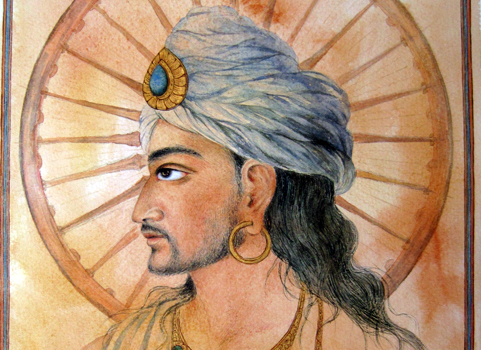King Ashoka of India

By Dzongsar Khyentse Rinpoche
It is beyond doubt that the past glory of Buddhism is due to its followers’ courage in seeking the true meaning beyond a material life. But we should never forget that this glory was also due to the support provided by people and nations who saw value in such pursuits. Even great kings and warlords have put aside their usual ambitions in the interest of supporting the buddhadharma. It is in these footsteps that Khyentse Foundation wishes to follow.
Buddhism has enjoyed many golden eras—the age of Ashoka’s Mauryan Empire (3rd century B.C.), the Chinese Tang Dynasty (8th century A.D.), Japan’s Tendai Dynasty (9th century A.D.), Kublai Khan’s reign (12th century A.D.), and pre-invasion Tibet. During those times, Buddhism suffused all parts of society. Just as people nowadays worship Ivy League graduates, Hollywood stars, and football players, the general public had tremendous respect for professional renunciants. They saw the value in investing in the enterprise of seeking enlightenment.
In a last few remaining places like Bhutan and Thailand, one can still find that same sort of veneration for enlightenment seekers. A renunciant can decide to do a nine-year retreat without much worry. Or a dharma student can find easy access to a monastery and a school for however long he or she wants to study. Giving is a very natural part of life in these places. Buddhism is kept alive in this way. Aside from these few examples, the modern age has lost this habit.
Buddhism has been introduced and is growing in the West, but support systems for spiritual pursuits are scarce. Only after buying a new Macintosh, going on vacation, taking out gym membership, and so forth, do we find some leftover pocket change to donate. Conversely, many western Buddhist students find retreat and renunciation difficult because of the continual need to support themselves on a material level. They lack institutions such as shedras (Buddhist colleges) and monasteries where they might simply walk in and request teachings. They must satisfy their interests individually, perhaps by going to Nepal or India to study language and scriptures on their own.
If we sincerely want to carry on the traditions of Buddhism, if we are talking about establishing Buddhism in the West, we need to think ahead to the next generation. This means creating lasting structures that foster practice and make the dharma available to anyone who is interested. We cannot sit back and wait until America or France becomes a Buddhist country. During his time, King Ashoka built many shrines and monasteries, he inscribed Buddhist teachings on rocks and pillars. He sent missionaries to countries as far as Greece and Egypt. His own son, a monk, carried Buddhism to Sri Lanka, where it is still the major religion. So we are starting small by doing things like publishing texts, sponsoring a three-year retreatant in France, feeding and housing seven hundred monks in India and Bhutan. The whole purpose of the Khyentse Foundation is to create a system of support for the continuing study and practice of the dharma.